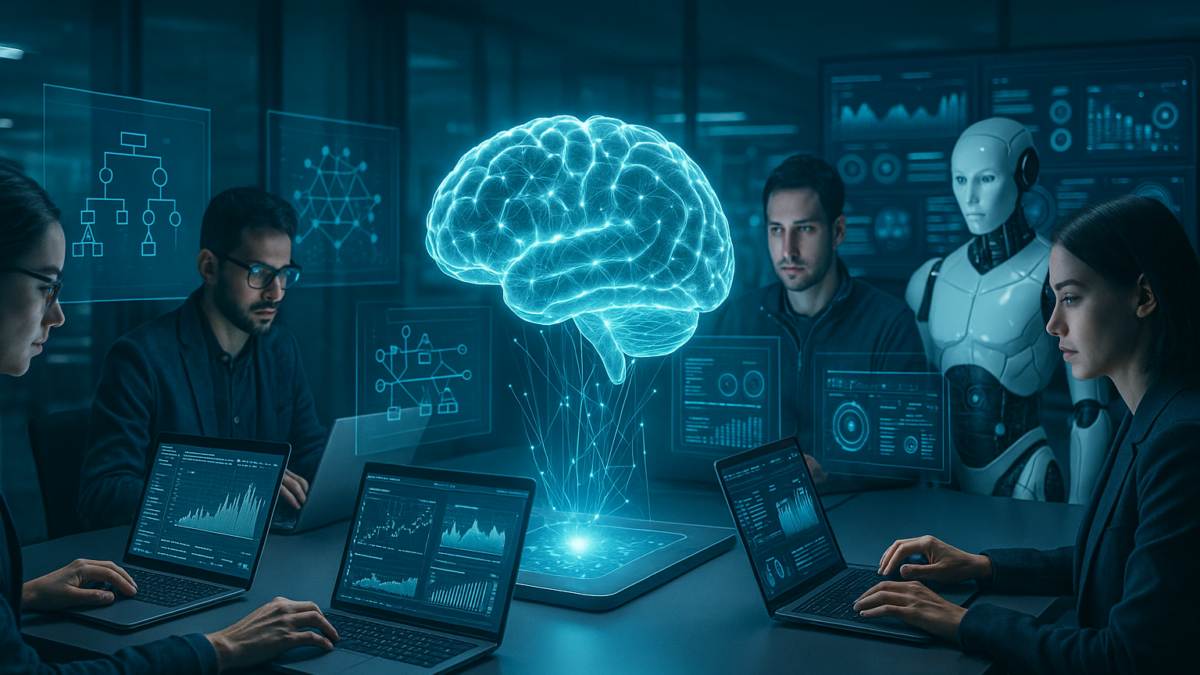Table of Contents
Introduction
In a world powered by data and automation, machine learning (ML) is no longer a futuristic buzzword—it’s an essential part of everyday technology. From personalized Netflix recommendations to fraud detection in banking, machine learning is quietly driving innovation across industries.
But what is machine learning, and why is it so important in 2025?
In this beginner-friendly guide, we’ll break down the concept, show how it works, explore real-world applications, and highlight why now is the perfect time to understand machine learning.
What is Machine Learning?
Machine learning is a branch of artificial intelligence (AI) that enables systems to learn from data, identify patterns, and make decisions without being explicitly programmed.
Unlike traditional software, where developers write rules, machine learning models automatically improve as they are exposed to more data.
Key Definition:
Machine Learning is the process of teaching computers to make predictions or decisions based on past experiences (data).
How Machine Learning Works (Step-by-Step)
Understanding how ML works is easier when you break it down into steps:
Collect Data
- Data is the fuel for machine learning. It could be images, numbers, text, or clicks.
- Example: E-commerce site collects past purchase data.
Prepare the Data
- Cleaning and formatting the data (removing duplicates, fixing errors).
- Split data into training and test sets.
Choose a Model
- Select an algorithm to process the data (e.g., decision tree, linear regression, neural networks).
Train the Model
- Feed the training data to the algorithm.
- The model learns patterns from input-output pairs.
Evaluate the Model
- Test the model using unseen data to measure accuracy.
Predict & Improve
- Use the model for real-world predictions.
- Continuously refine it using feedback and new data.
Types of Machine Learning
Machine learning can be broadly classified into three types:
Supervised Learning
- The model learns from labeled data (input + correct output).
- Examples: Spam detection, price prediction, credit scoring.
Unsupervised Learning
- No labels provided; the model finds hidden patterns.
- Examples: Customer segmentation, anomaly detection.
Reinforcement Learning
- The model learns through trial and error with rewards and penalties.
- Examples: Self-driving cars, game-playing AIs like AlphaGo.
Real-World Examples of Machine Learning in 2025
Machine learning is transforming every industry:
Healthcare
- Predicting patient diagnoses.
- Personalized treatment plans via AI algorithms.
Finance
- Fraud detection using behavioral patterns.
- AI chatbots for customer support.
Marketing
- Predicting customer churn.
- Personalizing content and ad targeting.
Retail
- Inventory forecasting.
- Recommending products based on browsing history.
Education
- Adaptive learning platforms that tailor lessons.
- AI-powered tutoring apps.
📊 Stat: The global machine learning market is projected to reach $209.91 billion by 2029, growing at a CAGR of 38.8%.
Source: Fortune Business Insights
Benefits of Machine Learning
Machine learning offers a wide array of advantages:
- Automation of repetitive tasks
- Improved decision-making with data-driven insights
- Scalability for large datasets
- Personalized experiences for users
- Faster predictions than traditional methods
Challenges of Machine Learning
Despite its promise, machine learning has limitations:
- Data Privacy: Sensitive data must be handled securely.
- Bias in Algorithms: Poor data can lead to unfair predictions.
- Complexity: ML systems are hard to interpret and debug.
- Regulations: Compliance with evolving laws like GDPR and AI Acts.
Future Trends in Machine Learning (2025 & Beyond)
The machine learning space is evolving rapidly. Some major trends include:
- Edge ML: Running ML models directly on devices like smartphones and drones.
- Explainable AI (XAI): Making AI decisions more transparent and accountable.
- Federated Learning: Training models without centralizing sensitive data.
- AutoML: Automating the ML pipeline, making it accessible to non-tech users.
- Green AI: Building energy-efficient ML models.
Getting Started with Machine Learning
Interested in learning machine learning? Here’s a beginner roadmap:
Learn the Basics
- Understand statistics, probability, and Python.
- Take online courses from platforms like Coursera, edX, or ITmunch Academy.
Explore ML Libraries
- Use tools like scikit-learn, TensorFlow, or PyTorch.
Practice on Real Datasets
- Use platforms like Kaggle to compete and learn.
Build Small Projects
- Predict housing prices or classify images.
Stay Updated
- Follow AI trends and subscribe to trusted sources like iTMunch
Conclusion: Why ML Matters More Than Ever
Machine learning isn’t just a tool for data scientists anymore. In 2025, it’s at the heart of innovation—helping startups, enterprises, and individuals make smarter decisions, automate faster, and build intelligent products.
Whether you’re a student, marketer, founder, or tech enthusiast, understanding machine learning is an essential skill for the future.
Ready to Embrace the Power of Machine Learning?
iTMunch’s AI & ML consulting services can help you design smarter systems and scale innovation faster.
See Also: Machine Learning vs Deep Learning: Key Differences & Real-World Applications





